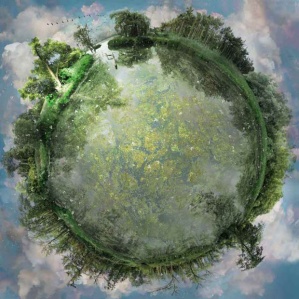 So you’ve happened upon my blog. Welcome and I’m glad you found me! In a nutshell, I’m an indie author and I write contemporary romance with an eco-conscience. Today I have decided to share Chapter 1 of The Things We Said in Venice, my second novel that just came out this spring. Consider it a long teaser.
So you’ve happened upon my blog. Welcome and I’m glad you found me! In a nutshell, I’m an indie author and I write contemporary romance with an eco-conscience. Today I have decided to share Chapter 1 of The Things We Said in Venice, my second novel that just came out this spring. Consider it a long teaser.
Because I’ve been influenced by Dutch directness, I’ll be direct; if you like what you read, you can order a new copy of The Things We Said in Venice here, now, as in today, in both Kindle or Paperback by clicking this link. Why the directness? Because stories are written to be . . . well. . . read. Of course if you live in Great Britain the Amazon UK site is best and if you live anywhere else in Europe the Amazon Germany site is best (cheaper shipping). You can also read reviews on the Amazon US site, see press on the press link of my blog, or Google it. Here’s that teaser . . .
The Things We Said in Venice
Chapter 1
Sarah
While the locals shuffle carefully over the snow-slicked sidewalks, Sarah runs like a mad woman toward the Belluno station. I will not miss this one, she chants in time to the distant, yet steady clickety-clack of the train’s metal wheels gliding over tracks. She picks up her pace, the icy air burning her nostrils, the straps of her pack chafing her shoulders despite her thick winter layers.
She cuts through the abandoned village park, her laborious movements at odds with the utter stillness as Belluno train station finally pops into view. As she slows her pace, her body relays physical complaints to her mind: the surprising weight of her backpack cutting into her shoulders, the ache of ice-cold air in her lungs, the burning sensation of snowflakes on her cheeks.
When she comes to a standstill, a rush of heat explodes through her body. Moments later, perspiration builds beneath her thick winter layers, cooling her down. Damp curls form a blanket of cold around her neck. She shakes her head involuntarily as the first shiver crawls up her spine.
As means of distraction, Sarah people watches, though the pickings are slim—a thickly built woman holding the hand of a stout, large-eared boy, presumably her son, and an older, clean-shaven man in military uniform. All three sport dry hair.
By the time the train pulls into the station and Sarah hears the familiar hiss of the doors opening, her teeth are chattering. She finds a free place in the third railcar and finally unstraps the cumbersome backpack, setting it in the seat beside her. The whistle sounds and the train is about to take off, but it doesn’t. There is some sort of commotion. The doors open and close again. She can hear two men talking, perhaps the conductor and a male passenger. Although she can’t make out the words, one voice is laced with tension and a bit too loud. The other voice, which she assumes belongs to the conductor, remains calm.
Back home, she would need to know why the doors had to open once more and what these men are discussing. But in the past four weeks of free-wheeling through western Europe on her own, she has adjusted her way of responding to things beyond her control. She has learned to let go. It is so different from how she acts at home that she has given her newfound skill a name: European Style Detachment.
Her feet and hands begin to return to body temperature as the train finally leaves the station. She leans into her large backpack and closes her eyes. She feels a slight pulsing in her subconscious, like an alarm clock going off in the neighboring hotel room; something you hear, but can choose to ignore. Except that she can’t. Something’s not right. It could be that slightly angry conversation she overheard, or it could be that the bag she is leaning into doesn’t smell like her bag. It has the faint scent of cinnamon and musk tinged with sweat; the scent of a man.
Sarah straightens in her seat, scrutinizing the travel backpack as one might scrutinize a naked stranger you have unwittingly brought into your bed—curiosity tempered with fear. It is black like hers. It has the white North Face logo of her bag and the same rainbow strap she put on it to differentiate her black bag from all the other black bags of the world. But isn’t the strap in a different place? And come to think of it, it felt heavier than her bag when she was sprinting to the train station.
Maybe it smells so manly from being in the pile of luggage where she stashed it while she grabbed a brioche at the café. Or, it could have been shuffled around in the compartment beneath the shuttle bus from Cortina to Belluno; cologne from a man’s bag spilling on hers.
I’m being ridiculous, she tells herself. But she unbuckles the exterior straps anyway and peers into the top compartment.
“Oh my God!” Sarah exclaims as she shuffles through the doppelganger of her bag. Several passengers turn toward her momentarily and then look away, exemplifying European Style Detachment. At the top of the backpack is a photography magazine written in what she thinks must be German. She pushes aside the magazine, revealing an impressive stash of Cote d’Or chocolate bars in their distinctive red and gold cardboard wrappers, cloth handkerchiefs in a Ziploc bag, a leather-bound journal, water, men’s plaid underwear size XL, slacks, long sleeve shirts, pants and thick woolen socks. On the inside tag of the top compartment is a name written in black permanent marker: Fokke van der Veld. She stops her search and pushes the bag away in shock. How the hell did this happen?
It has stopped snowing outside and sun reflects off the whitened fields, punching into the window. Sarah reaches automatically into the side pocket for her sunglasses, but of course they’re not there. Her mother is in a thick pea coat, wearing Sarah’s missing sunglasses and deathly blue lipstick that promises to make her forthcoming tirade all the graver:
What are you going to do now Sarah? You should have taken your time in Cortina d’Ampezzo to make sure you had your own bag! Your passport, your money, your iPad. Everything is in that bag! You could be mistaken for a terrorist and thrown in prison for traveling without identification.
The locals say Cortina, not Cortina d’Ampezzo, Sarah counters. As a school counselor, she is well aware it’s abnormal to be seeing visions of her mother in her head, not to mention silently conversing with her. But as usual, mom’s got a point. Sarah thinks about Italian corruption, envisions a musty 17th century prison cell with a mangy rat family in one corner and instruments of torture in the other. She stands suddenly, wanting to take action; wanting her mom to shut up. She has thirty euros in her jacket pocket along with the train ticket and the address of the hotel in Treviso where she will be staying. That’s at least something. But how on earth is she going to get her bag back? And who the hell is Fokke van der Veld?
END CHAPTER ONE
Did you enjoy this teaser? You can continue reading by ordering a copy of The Things We Said in Venice in Kindle or Paperback by clicking this link. Please help support this author by purchasing a new copy. Authors get no royalties from second hand books. Royalties help support authors and encourage them to keep writing.
THANK YOU FOR READING.
Yours truly,
Kristin Anderson
 Apparently, one episode of Somebody Feed Phil takes place in one of my favorite cities: Venice. As you may have gathered from my second novel The Things We Said in Venice, I also love food, travel and Venice and of course a great love story that makes people happy. That’s why I’m so excited about this show! Restaurants– both real and fictional–pop up throughout my novel as well as discussions of food, veganism and how our diet effects the planet. But back to love; they say the best way to a person’s heart is through his or her stomach. Fokke van der Veld, a travel writer like Phil, knows the heart-value of food; he seeks out a vegan restaurant in Venice to woo the vegan of his eye, Sarah Turner. Espen also gives this technique a whirl. Who is Espen? A Norwegian man who also attempts to reach Sarah’s heart through her stomach by making vegan mozzarella.
Apparently, one episode of Somebody Feed Phil takes place in one of my favorite cities: Venice. As you may have gathered from my second novel The Things We Said in Venice, I also love food, travel and Venice and of course a great love story that makes people happy. That’s why I’m so excited about this show! Restaurants– both real and fictional–pop up throughout my novel as well as discussions of food, veganism and how our diet effects the planet. But back to love; they say the best way to a person’s heart is through his or her stomach. Fokke van der Veld, a travel writer like Phil, knows the heart-value of food; he seeks out a vegan restaurant in Venice to woo the vegan of his eye, Sarah Turner. Espen also gives this technique a whirl. Who is Espen? A Norwegian man who also attempts to reach Sarah’s heart through her stomach by making vegan mozzarella.



 So you’ve happened upon my blog. Welcome and I’m glad you found me! In a nutshell, I’m an indie author and I write contemporary romance with an eco-conscience. Today I have decided to share Chapter 1 of
So you’ve happened upon my blog. Welcome and I’m glad you found me! In a nutshell, I’m an indie author and I write contemporary romance with an eco-conscience. Today I have decided to share Chapter 1 of 















 It’s also good to remember what counts. In the right hand corner of my WordPress screen, there is a little icon with a pen that says WRITE. It is a simple icon used to start a new post, but I view it as a reminder of one of the most basic principles of being a writer. WRITE: Every day, twice a day, wherever and whenever you can fit it in. But in the mean time, there are 291 pages consisting of 83,825 words of storytelling
It’s also good to remember what counts. In the right hand corner of my WordPress screen, there is a little icon with a pen that says WRITE. It is a simple icon used to start a new post, but I view it as a reminder of one of the most basic principles of being a writer. WRITE: Every day, twice a day, wherever and whenever you can fit it in. But in the mean time, there are 291 pages consisting of 83,825 words of storytelling 



 U.S. readers can order a copy of the
U.S. readers can order a copy of the 